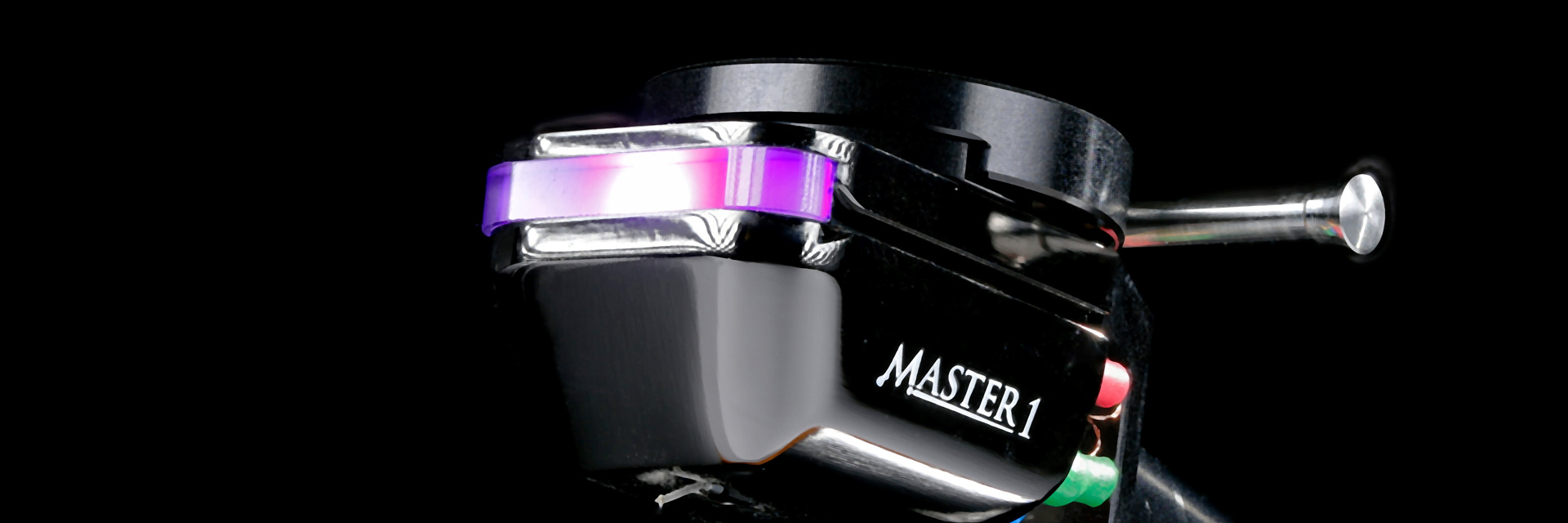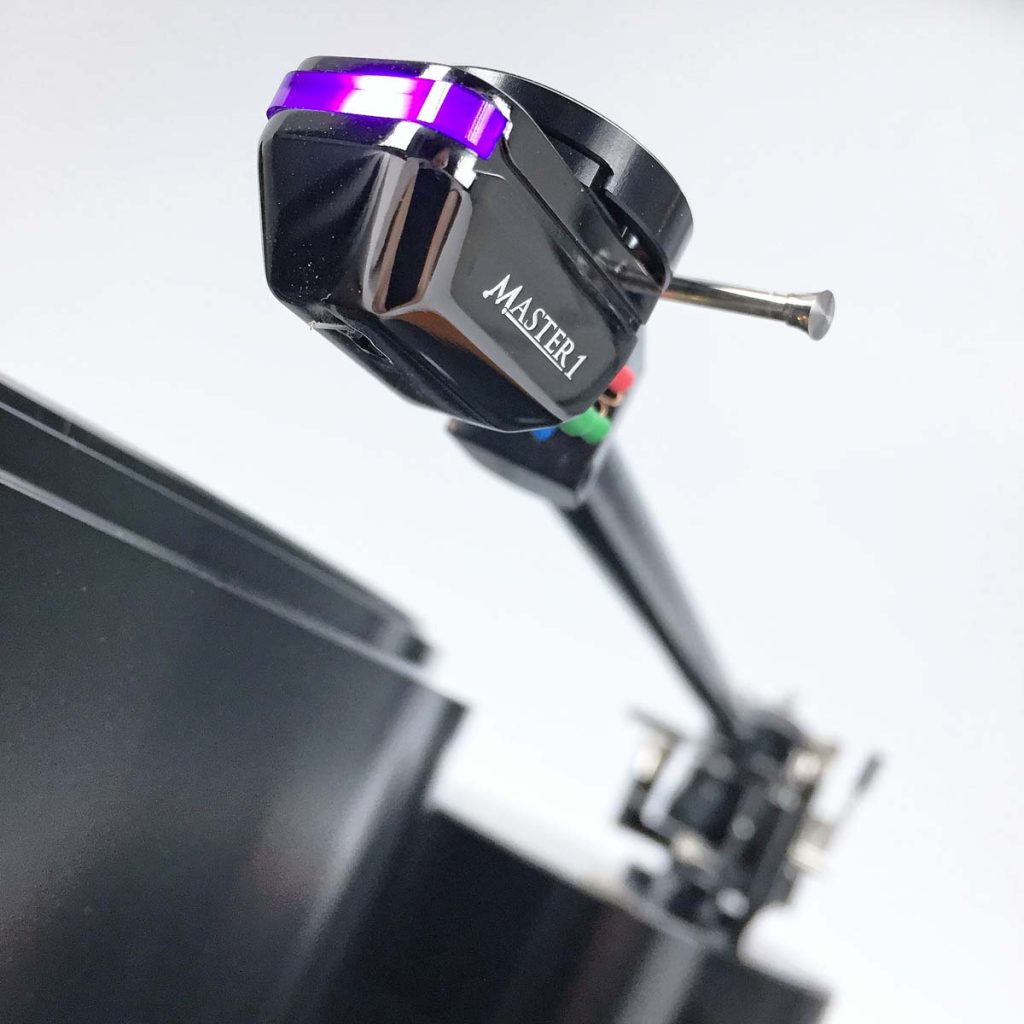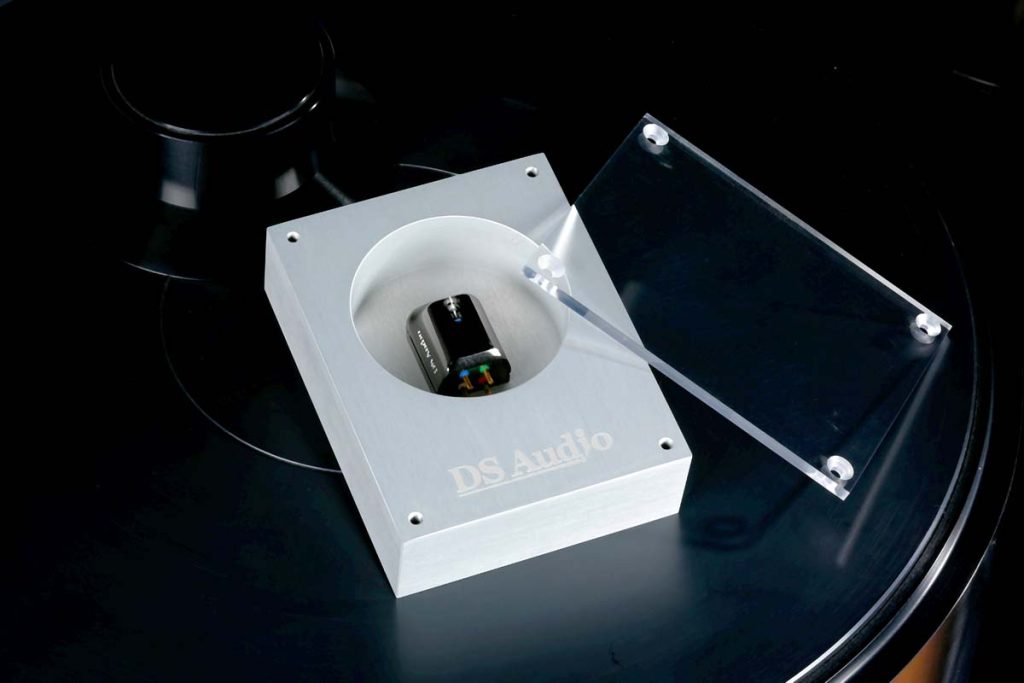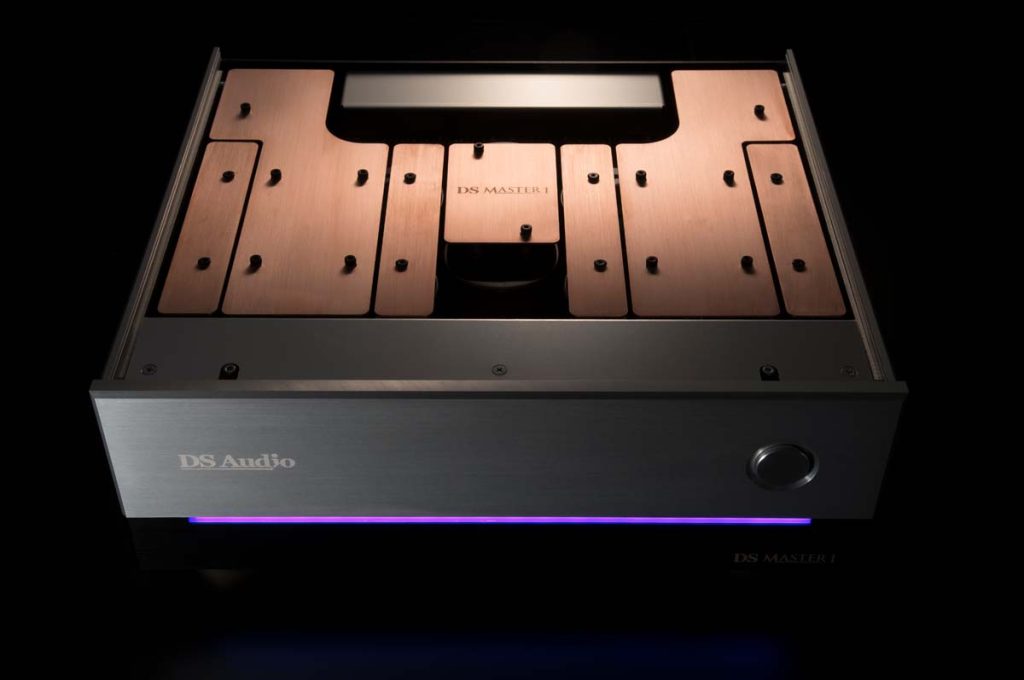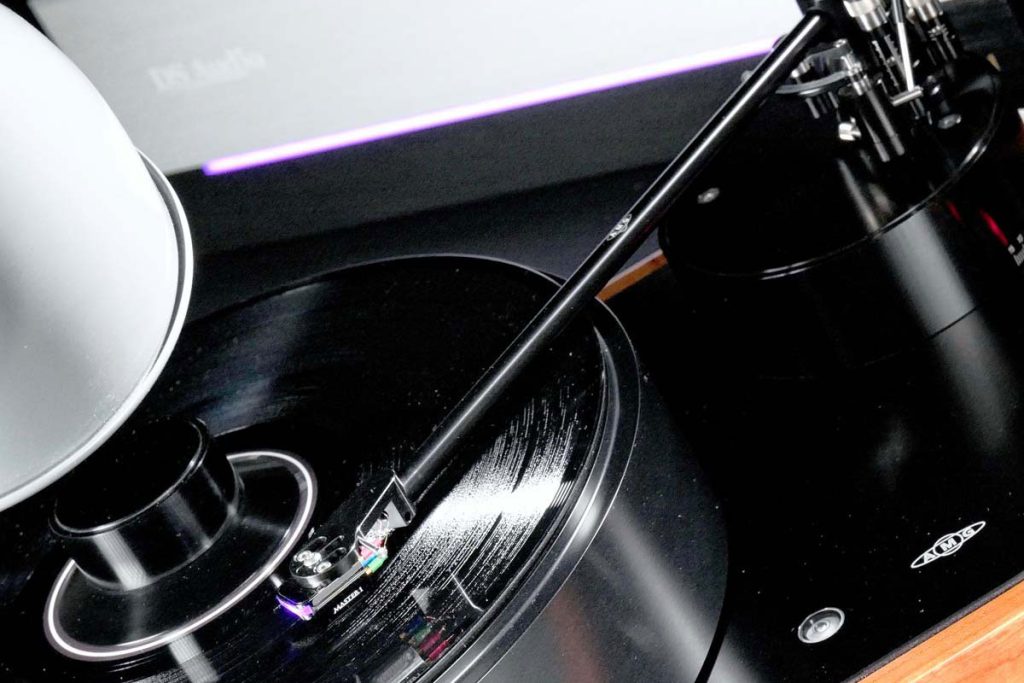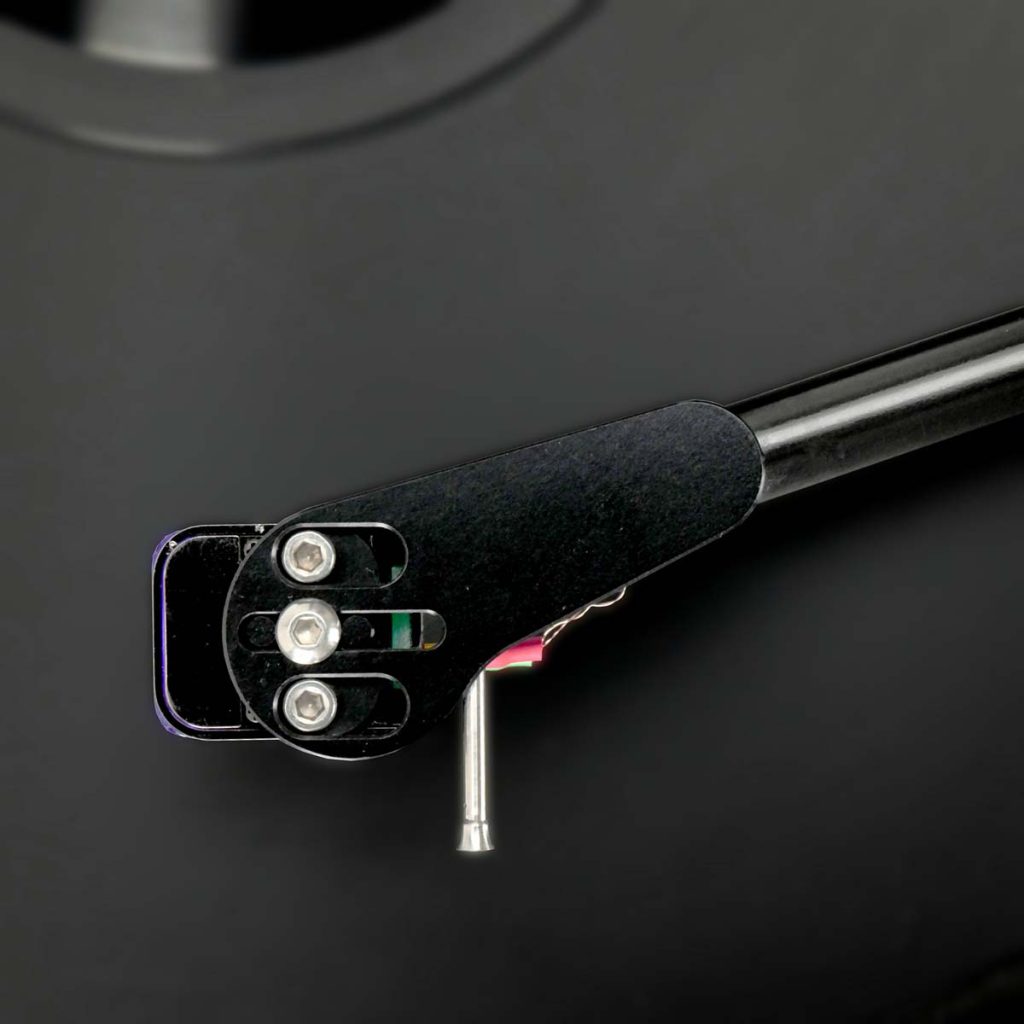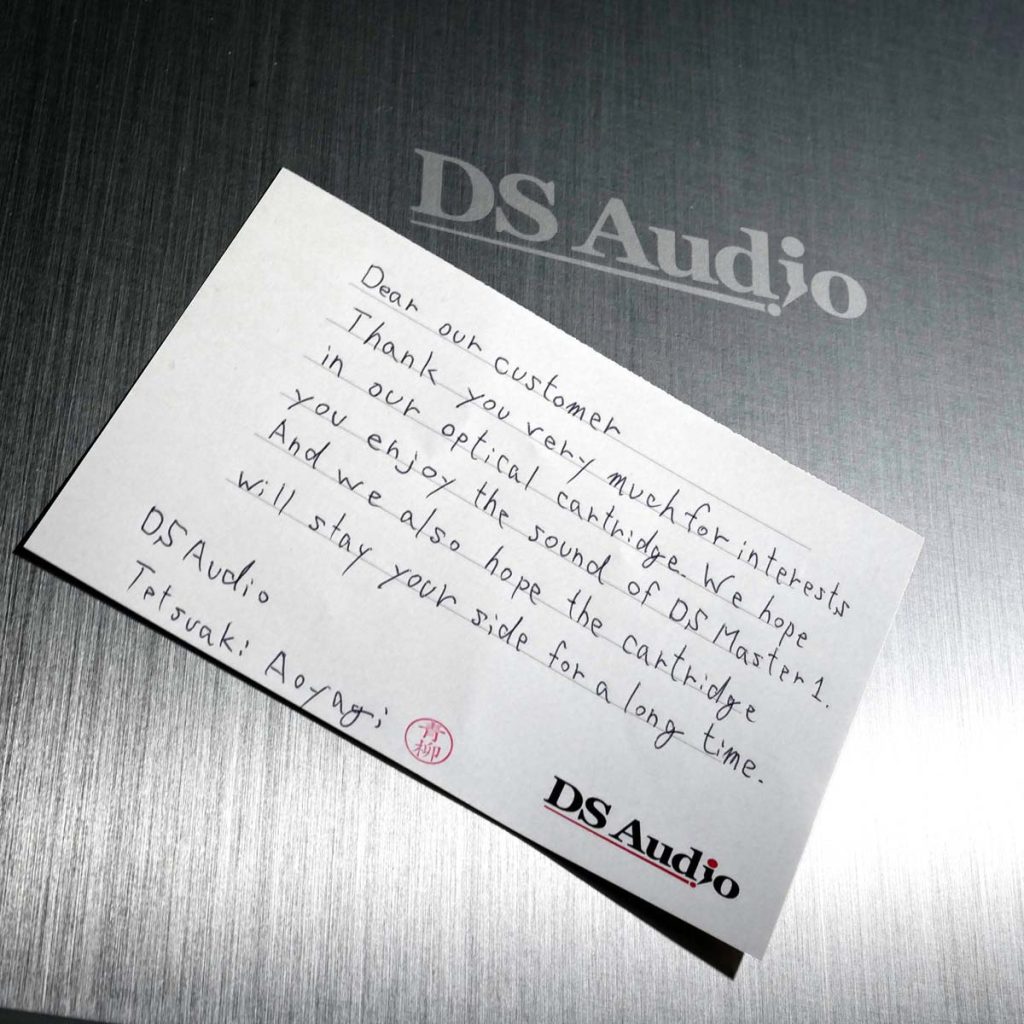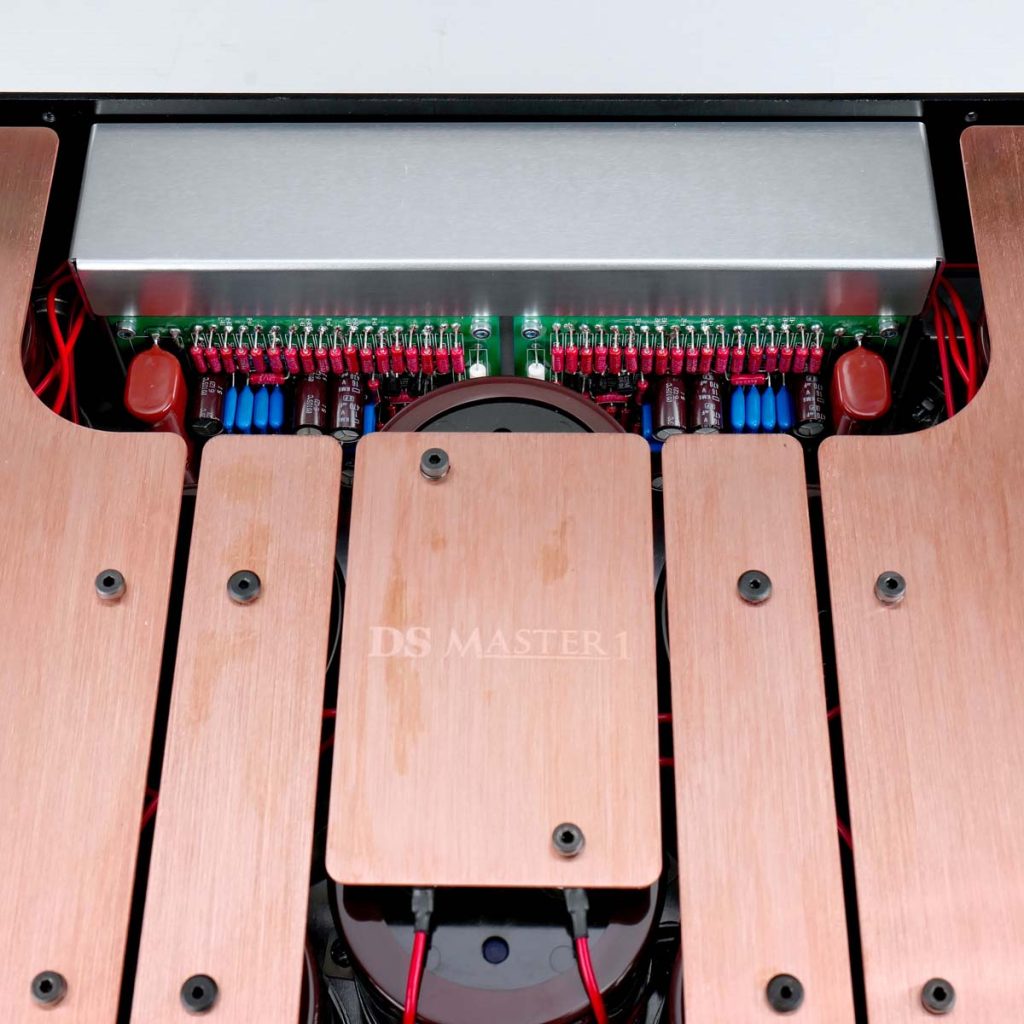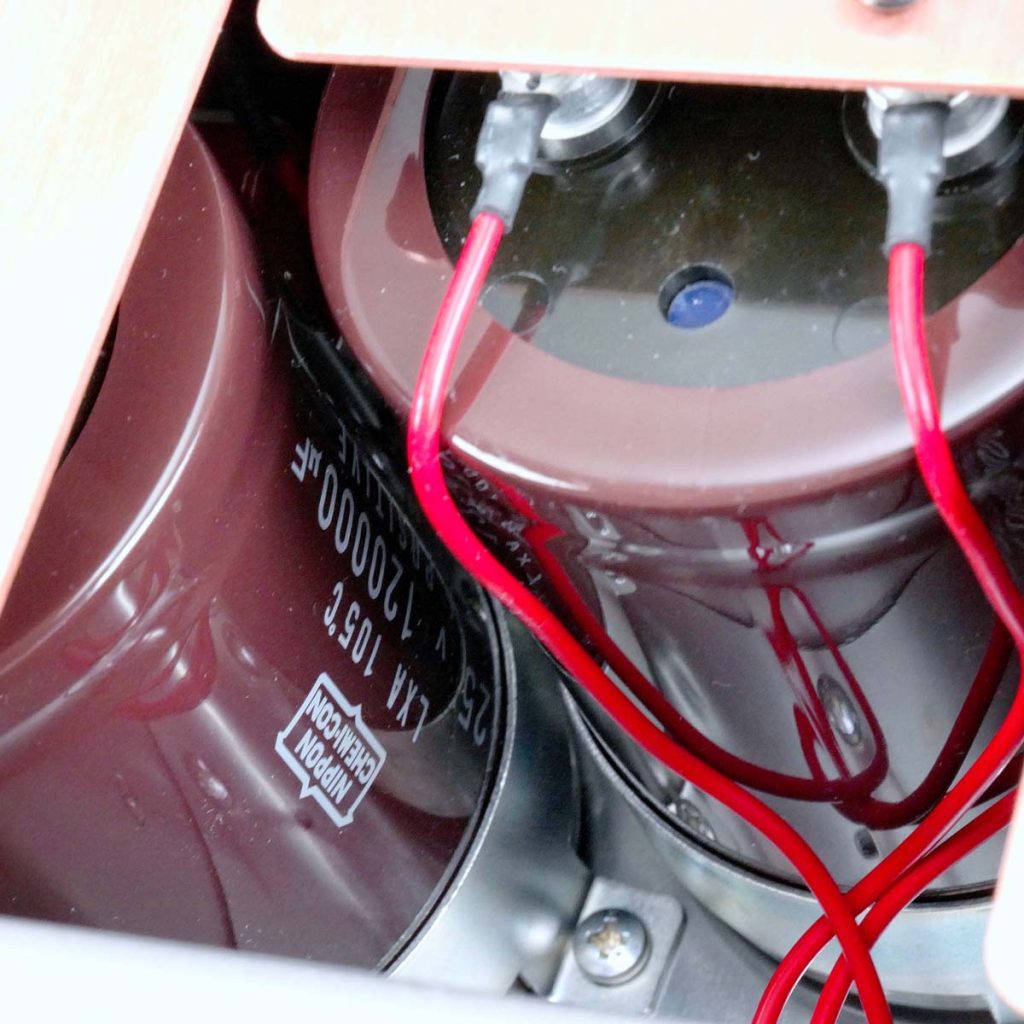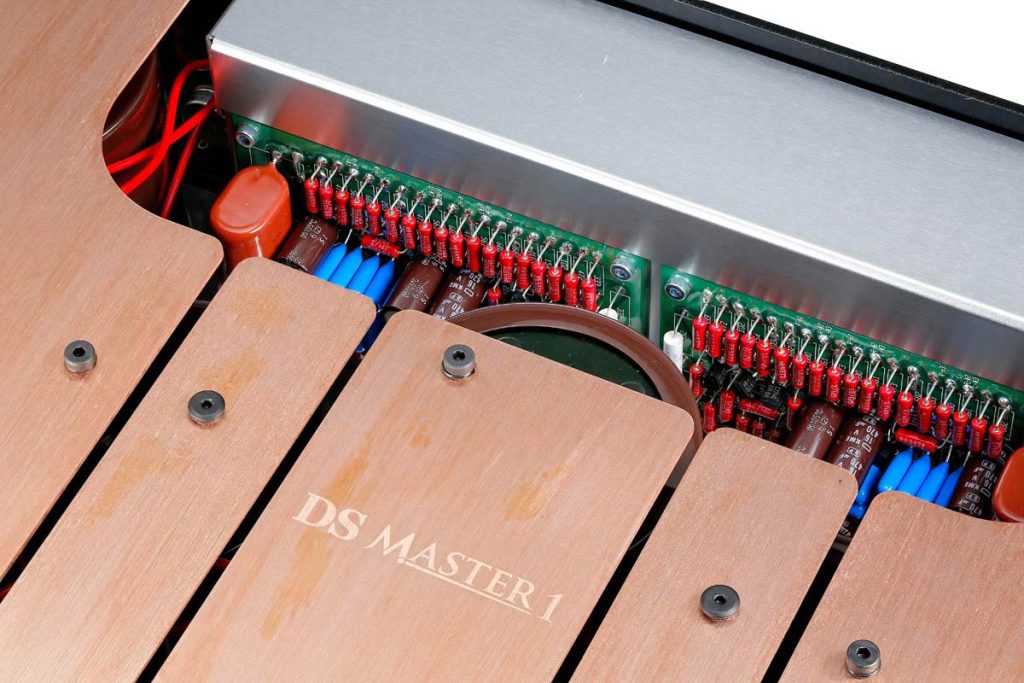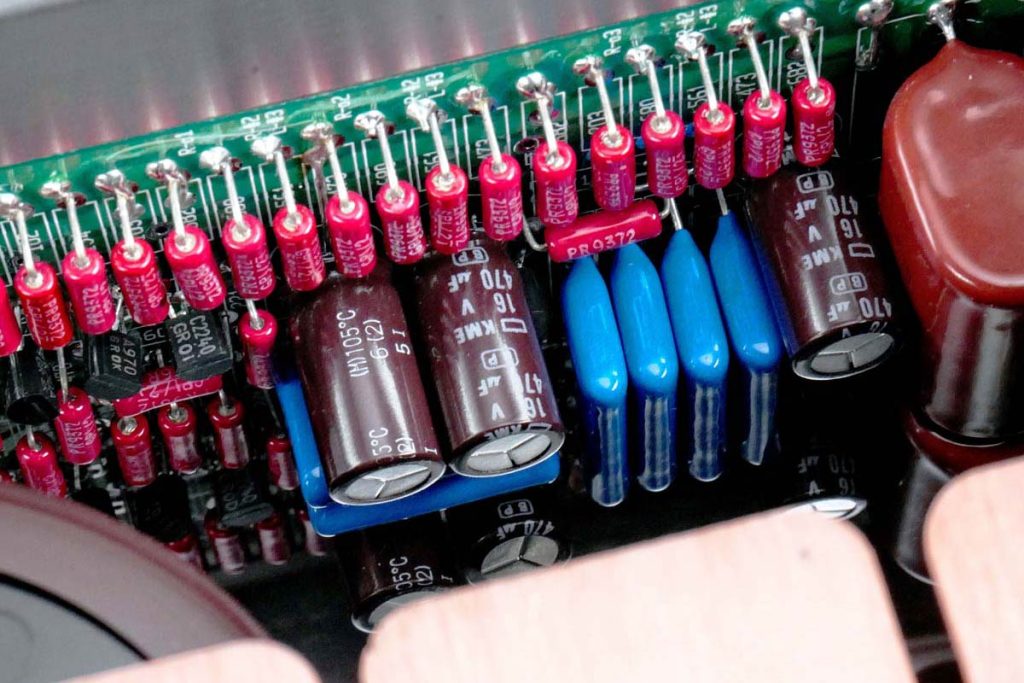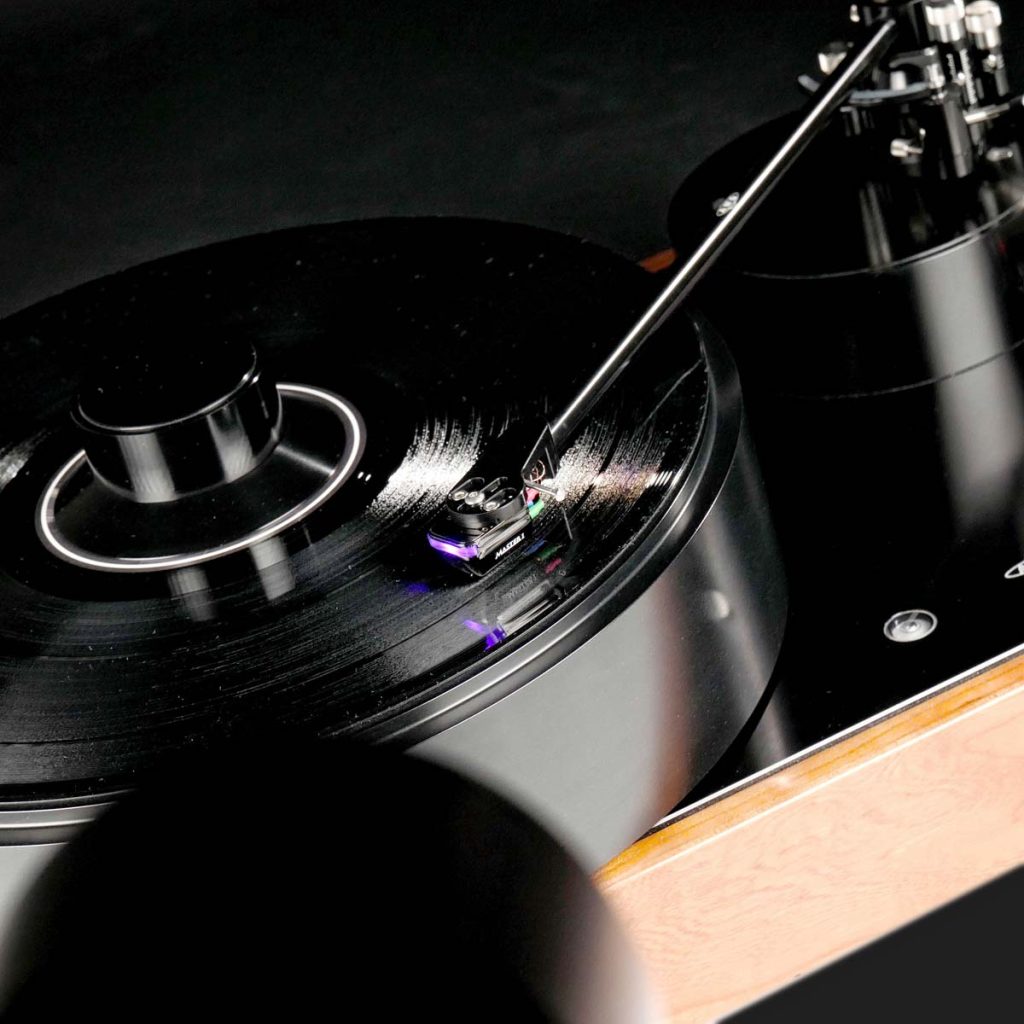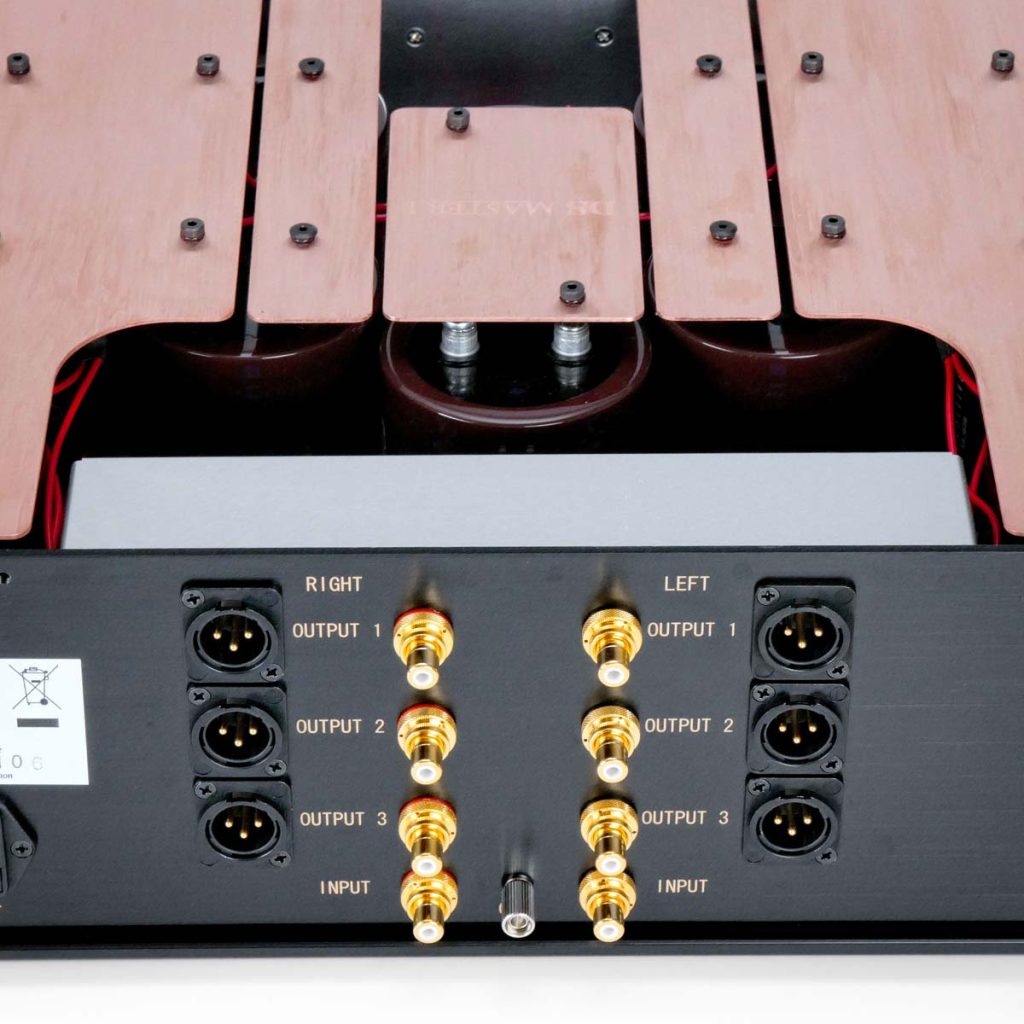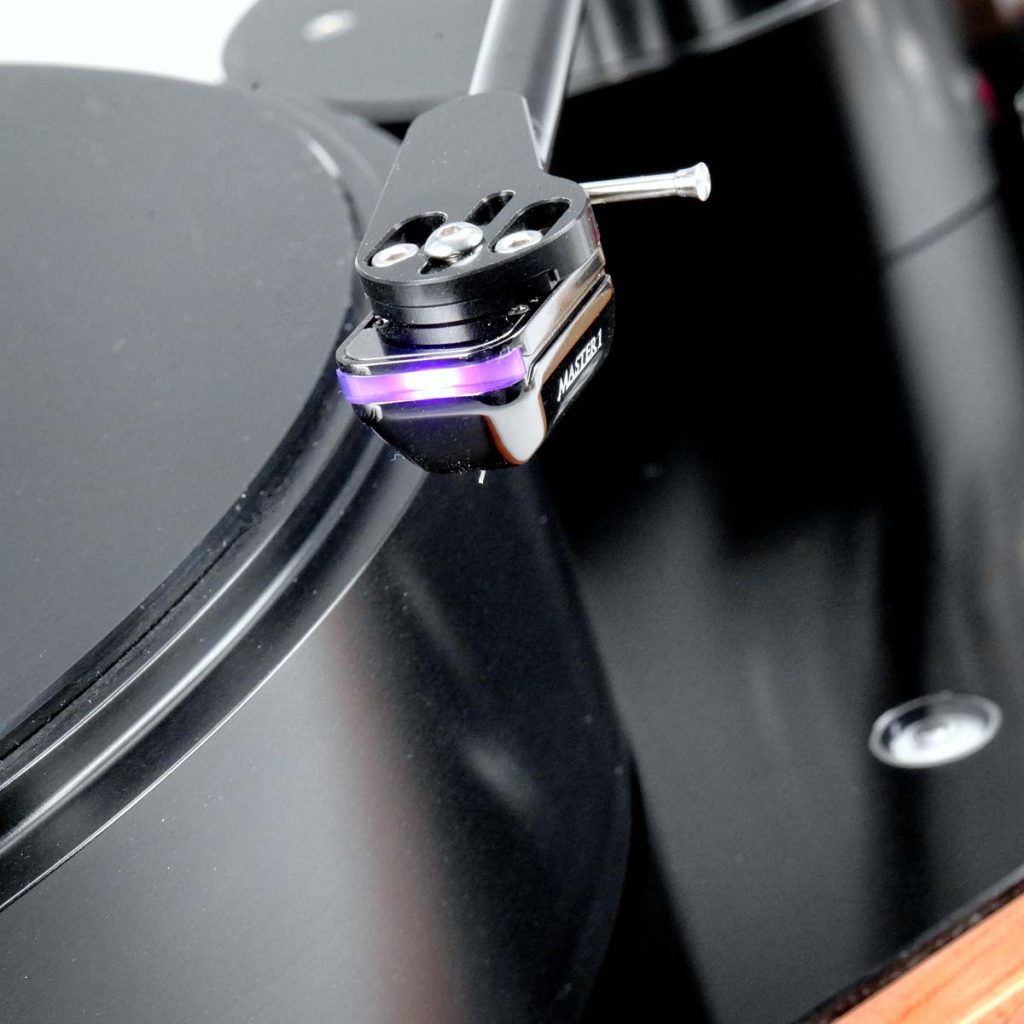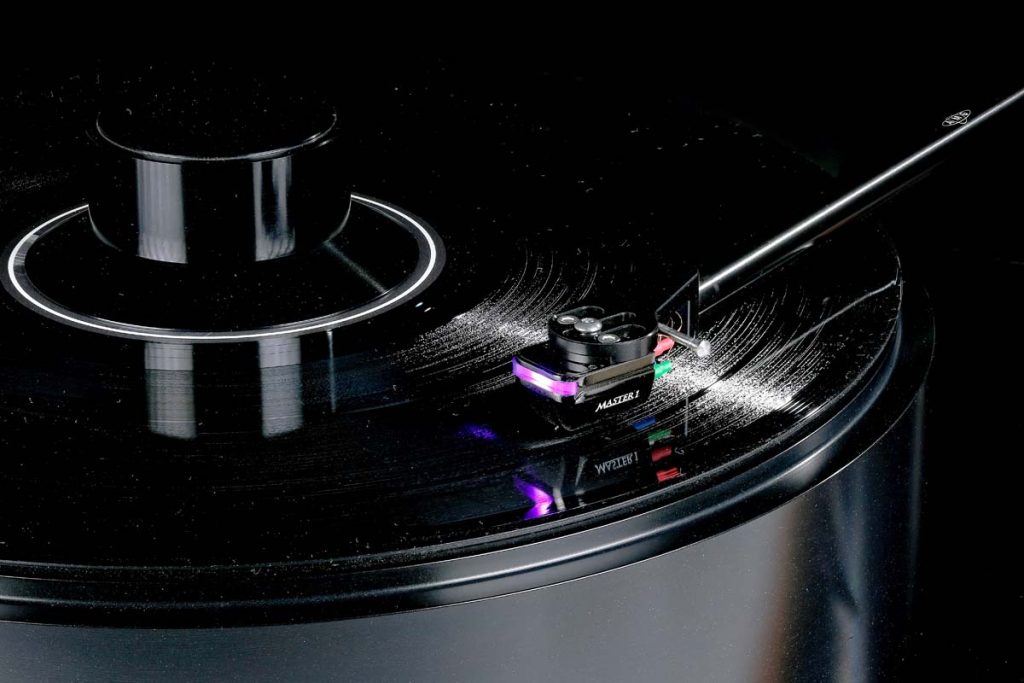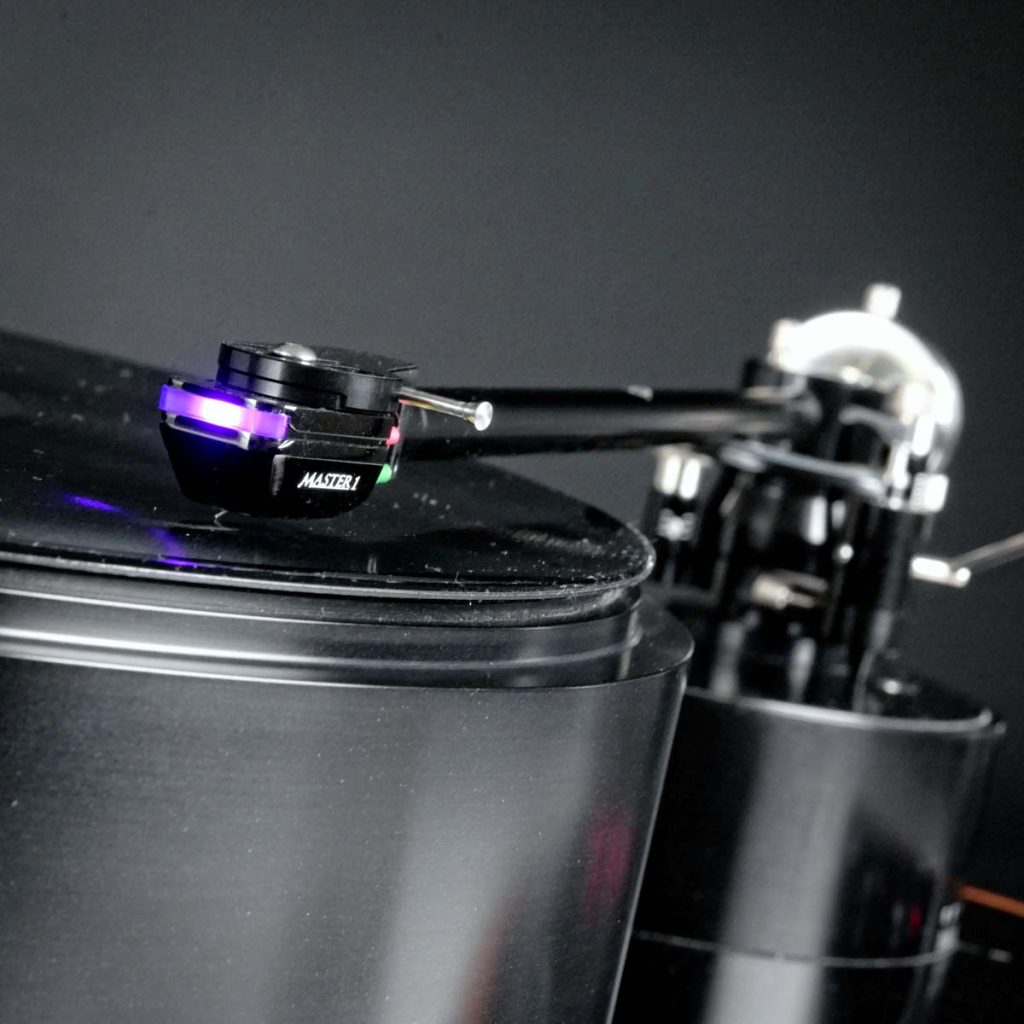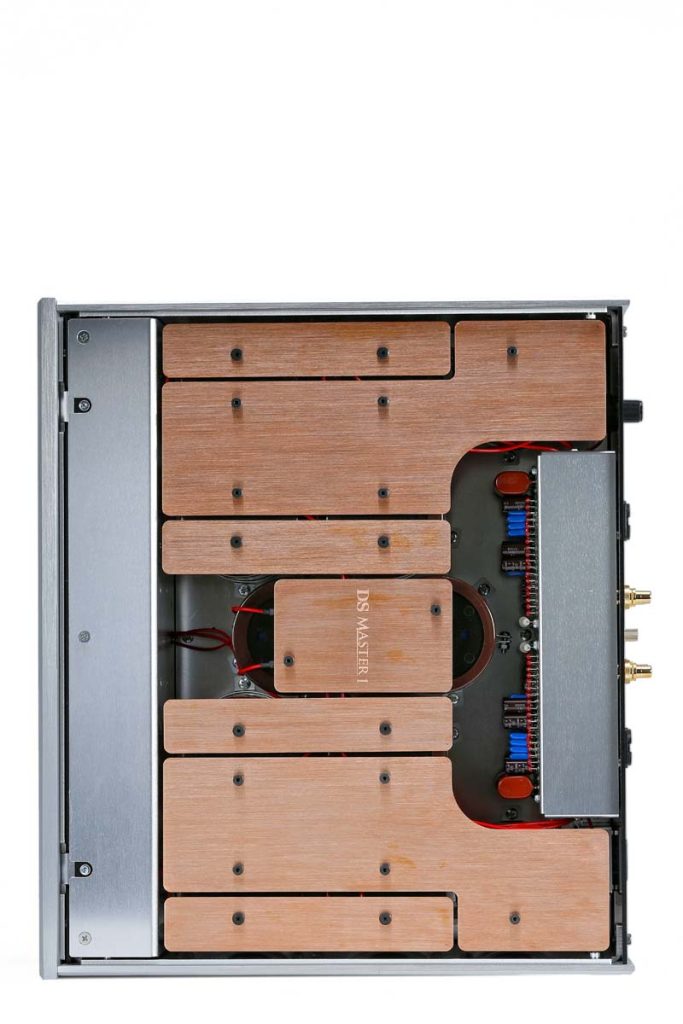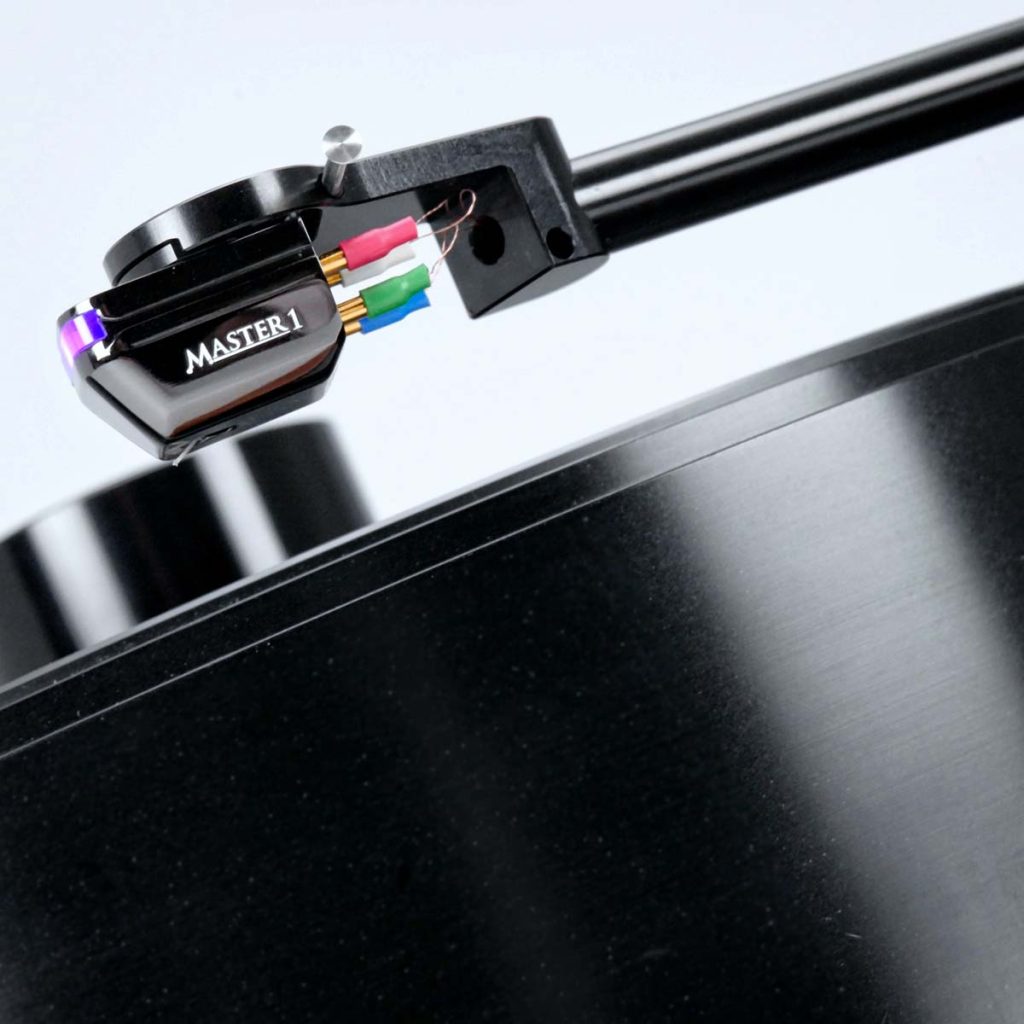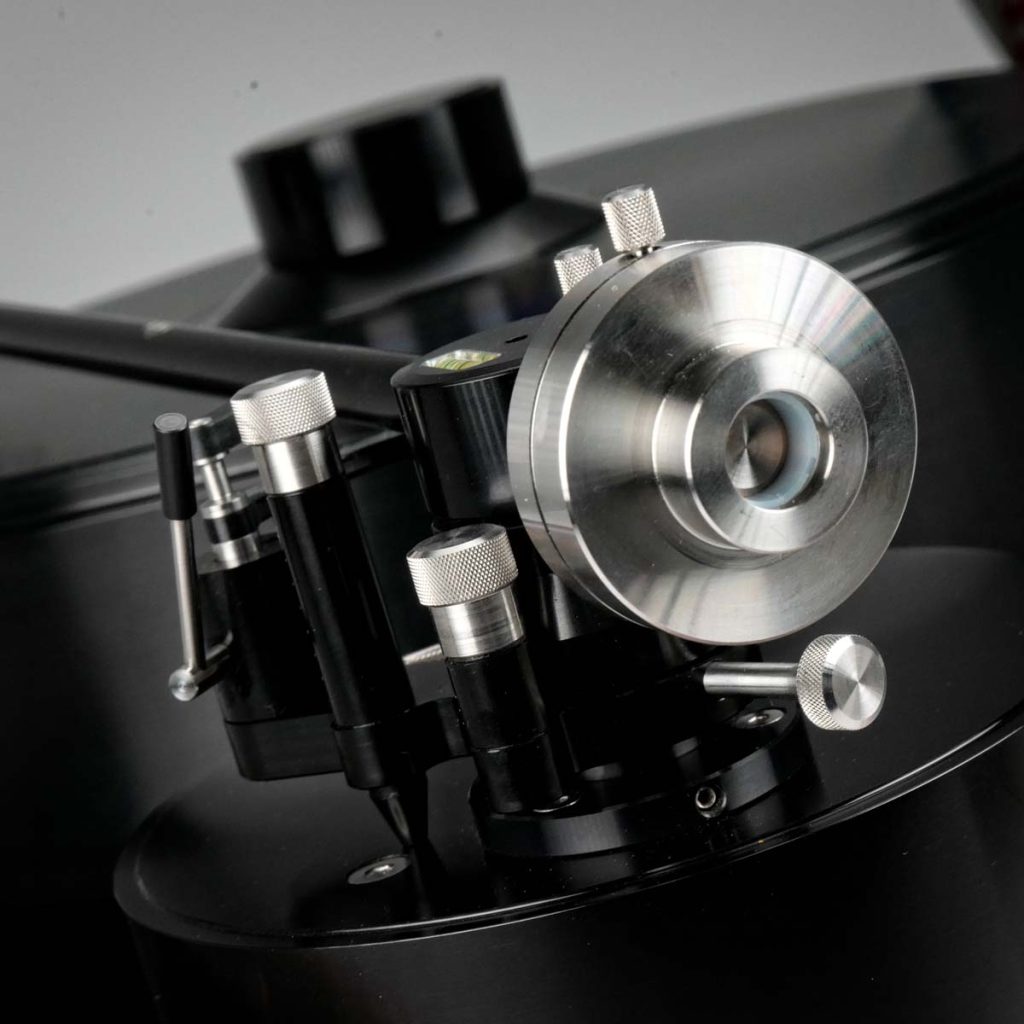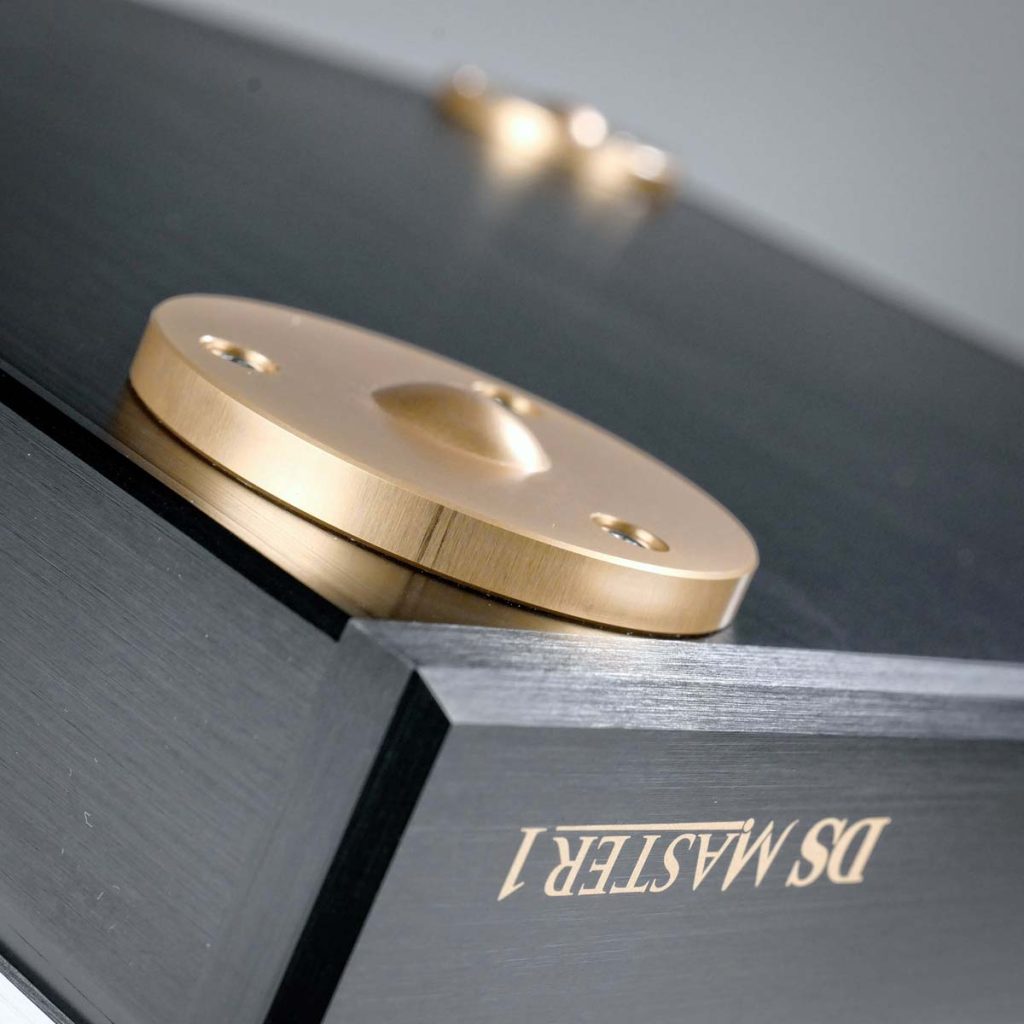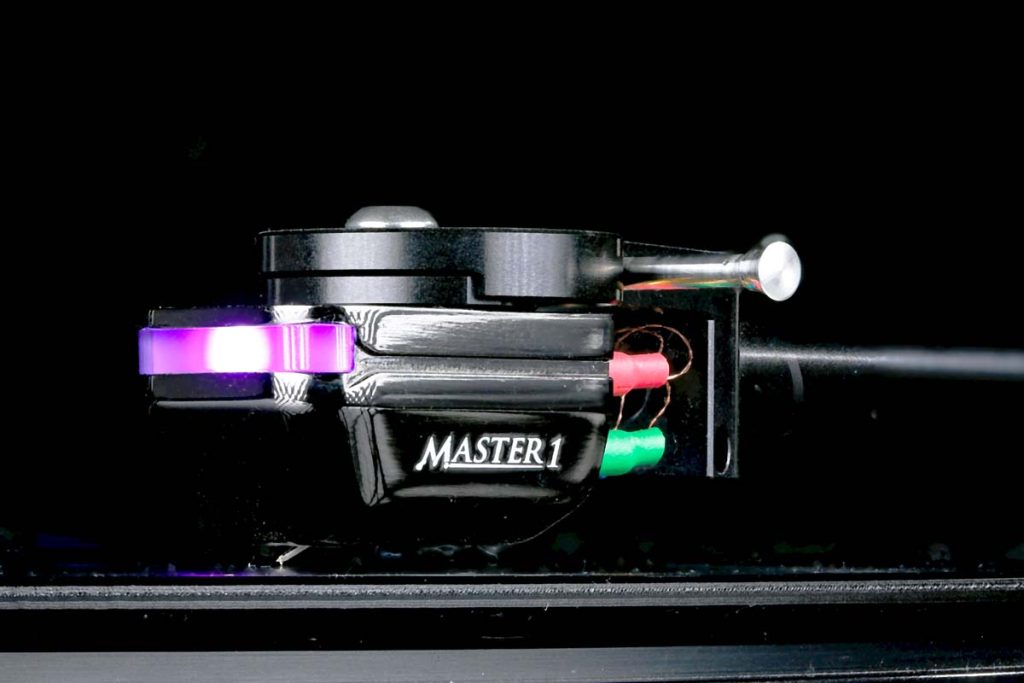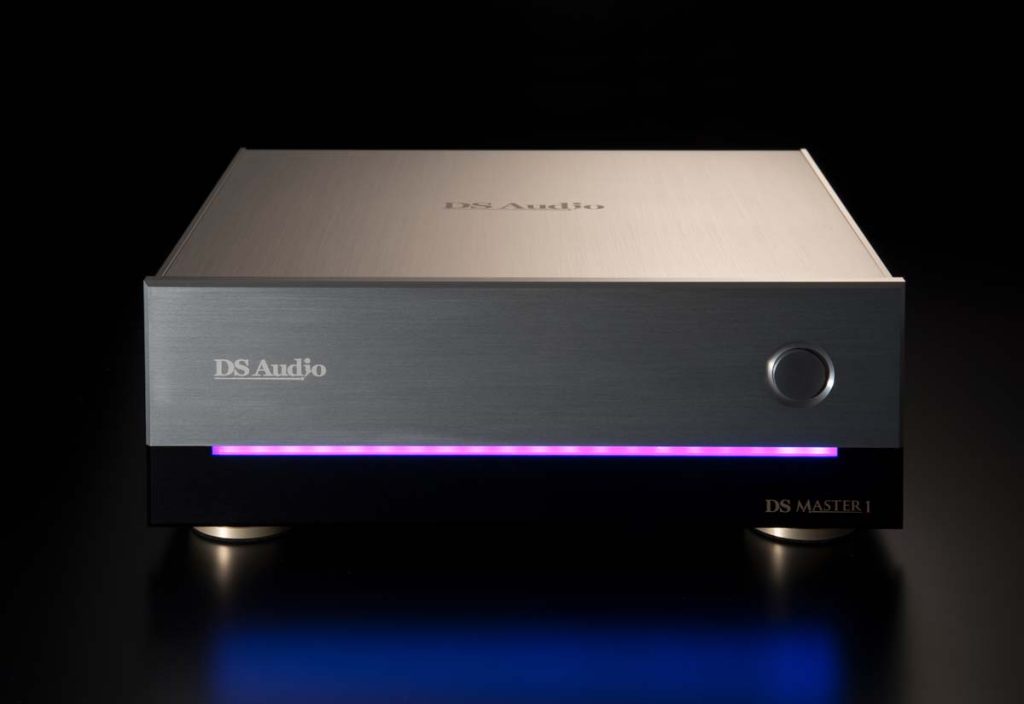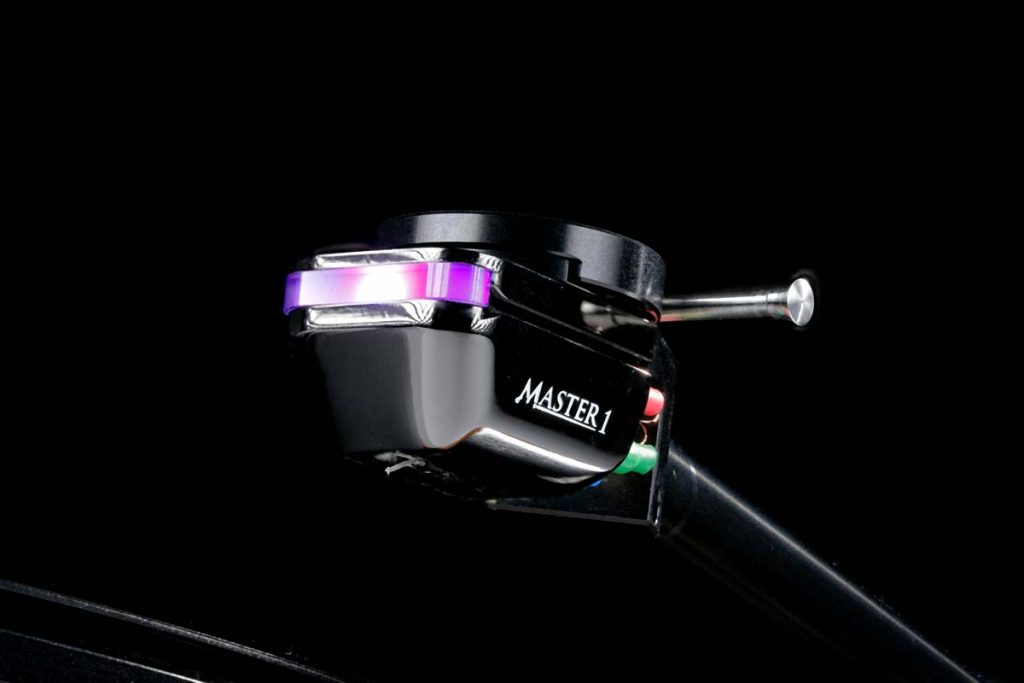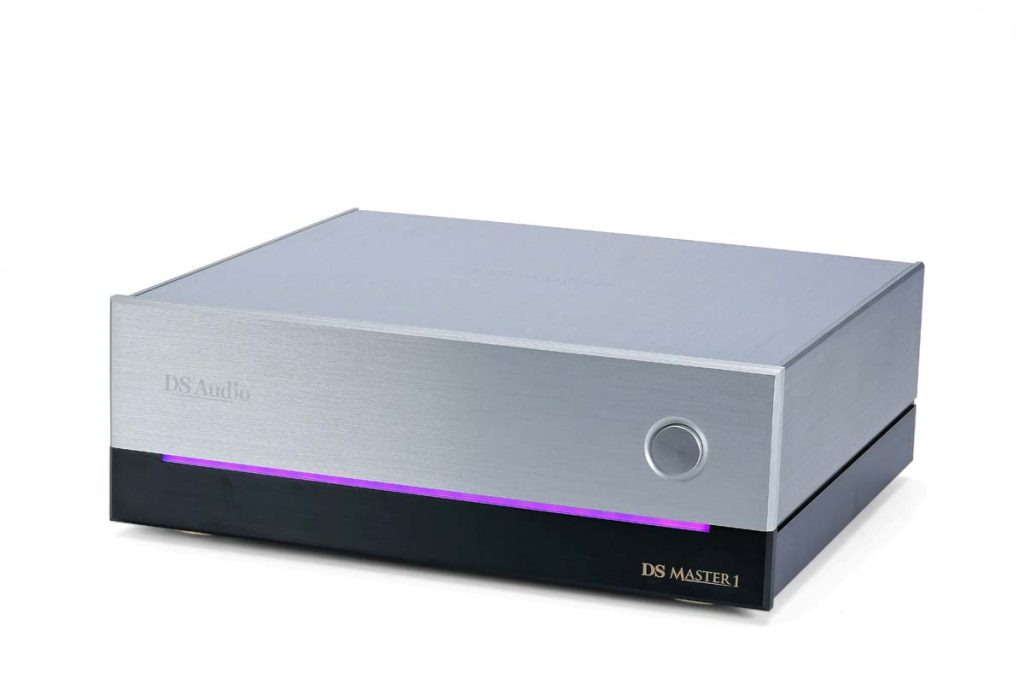Shadowing With Light
Before the revolution starts to become par for the course, the optical cartridge pioneer ups the ante: DS Audio releases the new top-of-the-range Master 1 to sit alongside its brilliant debut release.
“I’ve seen the future and it will be. I’ve seen the future and it works.” – When the musical genius Prince uttered those words of wisdom on his 1989 Batman soundtrack, initial trials using optical cartridges were already old news. As far back as the late 1960s, Toshiba had released the C-100P model under its luxury brand Aurex. Unfortunately it was not suitable for general use due to technical limitations at the time: Aurex had chosen to use a small bulb as a light source and the heat it gave off each time the device was in use would cause undesirable side effects in a matter of minutes or at least before one side of the vinyl had even finished. The whole thing had simply been cobbled together too hastily.
The principle behind the optical cartridge itself is, however, so incredibly simple that you have to wonder why DS Audio only just a few years ago decided to turn its hand to it, using modern, “cool” semiconductor technology and an extremely precise (and extremely reliable) approach. Presumably, the coinventor of the optical computer mouse must have had to actually decide to get involved in the high-end audio scene first. We have DS Audio’s parent company Digital Stream Corporation (DSC) and, in particular, the founder’s son Tetsuaki “Aki” Aoyagi, barely 30 years old and passionately committed to analog technology, to thank for this spectacular, next-level development. The step was actually not such a big one as the requirements of an optical mouse and an optical cartridge are very similar: Like with an optical mouse, the trick with an optical cartridge is to convert an object’s tiniest movements within a defined space into varying electrical voltages. In a moving magnet (MM) system, a magnet moves among fixed coils; in a moving coil (MC) system, the coils move in a stationary magnetic field; and in the less popular principle of the moving iron (MI) cartridge, coils and magnets are fixed and a moving piece of iron converts the movements of the stylus in the record’s grooves into an electrical depiction of the music. Uwe Heckers already described how an optical cartridge works in FIDELITY No. 23 (issue 1/2016), so I can repeat his explanation here (see: “The technology behind the DS Audio Master 1”). Here is a short summary: An LED emits a light on two channel-separate photodiodes; in between them is a razor-thin “screen”, a light-tight film with two tiny openings that is attached to the cantilever. The greater the movement of the cantilever (the “louder” the music signal), the more light flows through the precisely defined holes on the photodiodes and the greater the output voltage. Incidentally, this is anything but digital; it’s a genuine analog concept that manages without any digital “translators” and can register extremely accurate sampling thanks to an extremely low mass. This (and so much is being revealed here) gives the DS Audio Master 1 an exceptionally fast signal speed.
As a side effect of the unconventional signal processing, DS Audio optical cartridges always work as part of a team; they always come with their special phono equalizers. The standard EQ unit provides the LED in the cartridge with the necessary cleanest possible power in addition to performing all preamplifier tasks with optimal coordination — i.e., it is directly connected to a high-level input from a preamplifier or an integrated amplifier.
For DS Audio, the sky was clearly the limit with the Master 1 flagship model. The improvements to the system and EQ unit compared with the already exquisite DS-W1 are correspondingly generous and expensive. For this reason, the stylus of the DS Audio Master 1 has an extra-sharp microridge cut and the cantilever is made from sapphire. What’s more, the fully reworked optical-mechanical sampling unit has been moved considerably closer to the stylus, resulting in a much shorter optical path length. A glance at the EQ unit clearly shows why the set price of the Master 1 is more than double: The solid 24-kilo whopper looks more like a fully-fledged power amplifier. Apart from the fun purple light strip on the front, which you can adjust in terms of width and brightness, the electronics are very serious indeed. The EQ unit is gigantic. The fully symmetrical construction includes, for example, three completely separate power supplies for the left and right channels as well as for the “shadowing LED” in the cartridge. Solid electrolytic capacitor banks are connected to each other using thick copper bus-bars. The cartridge also features three differently filtered outputs with XLR and RCA connectors as well as a thick aluminum housing that keeps everything safely covered. The only disappointing thing about the overall package is the cover, which is not completely rattle-free. Otherwise, just switch it on, ogle at it, and—listen to music!
I get my first impression of the Master 1 from the current system in the FIDELITY listening room, where all manner of top-of-the-range products are gathered, possibly not entirely by chance either. And as soon as the sound from the huge DS Audio system kicks in, I’m knocked off my feet: It sounds incredibly authoritative and somehow “definitive,” which people must be tired of hearing me say now. My acoustic memory, which saved only happy thoughts of the DS-W1 just two years ago, classifies the Master 1 on a higher level than what back then would have been barely imaginable but now is clearly discernible. That is, of course, also in view of the exorbitantly high price, reassuring. And at the same time thrilling. Bursting with sheer enthusiasm, I waste no time in reaching for the shelf of vinyls and putting together a little analog playlist for the next few hours. My incredibly positive first impression doesn’t change during the listening session. Before I begin my report on that, I’ll first outline the setup:
The DS Audio Master 1 is mounted on a fitting combination that entails the AMG Viella V12 turntable equipped with the new 12-inch AMG 12JT Turbo tonearm. And yes, that really is the tonearm’s name. “Turbo” here primarily refers to the accelerated access options: any adjustments to the tonearm can be made without tools, just your fingers. And for that reason alone I want to give it a massive kiss. Why has that only been the case with the exotic Micro-Seiki MA-505 up to now?
In this setting, the next big thing from another (cartridge) world feels audibly at home. This is high-end audio at its very best. It ensures every sound is suppressed, and it simply does not sound like anything at all. The new star affixed in the shining lights of the analog sky spans huge spaces presumably in original size, making you forget about the process behind the technical reproduction of sound events in just a matter of seconds. It focuses your concentration purely on the music. Oh yes! The overall tuning of this elaborate and by design visually striking pickup with its purple light strips on the front edge of the cartridge and EQ front plate is markedly unspectacular and is therefore perfect for relaxing, long listening sessions. A feature that the DS Audio Master 1 shares with only a few other top-class high-end products.
Since other gems (such as Tidal Preos, Amplifon SET 140, and Wilson Audio Yvette) currently “parked” in the FIDELITY headquarters favor this neutrality ideal, the road ahead is clear for playing lots of music that has a magnetic effect and positively and ceremoniously sucks the listener in. This happens, for example, quite superbly with the album Careless Love from the pop-jazz diva Madeleine Peyroux, which was rereleased by MFSL as an LP some time ago. The CD version of this collection of singer-songwriter classics recorded using a small line-up in a swinging fusion guise went a bit overboard with some frequencies. Since the double bass pushed too much, the voice sounded over-present, and the end result seemed to be aimed, with obvious loudness, at achieving an impact and being suitable for a ghetto blaster. The MFSL vinyl sets the shifted proportions straight, homogenizes the sound profile without flattening it, and clearly demonstrates the master tapes contain a very successful acoustic production. The DS Audio Master 1 set makes precisely that clear as well as highlights that there’s no need to spruce things up here and no need to soften any passages. Despite that, it is quite apparent that behind Peyroux’s expressive alto voice lies quite a complicated character, one who, on bad days, would trash a hotel room, but could also exude unbelievable charm in person.
Another charm offensive came in the form of the young Harry Belafonte, who had enchanted his audience with banana boat songs at Carnegie Hall in New York a good half a century ago. The audio recording of this memorable performance is far more than the excellent-sounding documentation of the vocal artistry of a singer with bags of charisma. To this day, Harry Belafonte Live At Carnegie Hall can still serve as a lesson on how to capture the special characteristics of a large room and how to properly present the proportions and spacings among (lots of) instruments. What’s more, the large Ampex tape machines clearly captured a lot of fine details — details the DS Audio Master 1 showcases completely naturally without forcefully removing them from their overall, general context. It’s just so fantastic and enjoyable!
Okay, with this audio messenger from the cartridge future I tend to prefer letting well-produced vinyls grace the AMG turntable. Yet in its “all-encompassing manner,” the Master 1 even makes records tolerable, sometimes even enjoyable, where the musical content and the recording quality are hardly compatible. Eddie Boyd’s blues album 7936 South Rhodes is one such example. It can’t fail to give you goosebumps. On the only album that Boyd recorded for Mike Vernon’s Blue Horizon label, the singer, known for his distinctive raspy voice, played with a combo by the name of “Peter Green’s Fleetwood Mac,” years before they became a pop super group. And with the maximum candidness of a true master that doesn’t have to make a song and dance of its own ability because it knows its job all too well, the Master 1 extracts the intimacy and sense of closeness of this recording session from the record’s grooves. I find its artistry instantly captivating.
The same thing also happens quite spectacularly with very different critical material. Arvo Pärt, the exceptionally gifted Baltic neo-archean and minimalist, writes music that seems to capture a completely different time and world. His work is the ideal music to play in order to meditate, float away, and forget the here and now. Pärt’s Miserere from 1989, which really gets under your skin and is dedicated to the legendary British Hilliard Ensemble, was recorded for all eternity on the audiophile vinyl label ECM in 1990 in the London church of Saint-Jude-on-the-Hill, a location that not only acoustically accommodates the exposed vocal lines of the singers but, in “Dies irae,” also accommodates the massive sound concentrations of the choir and orchestra. The DS Audio Master 1 demonstrates on two fronts exactly what an optical cartridge is capable of: it not only opens up an immensely wide and deep church interior and gets bells and percussion instruments ringing and chiming subtly and at length and provides voices with a direct route into the heart of the listener. No, the Master 1 truly snaps on the light with real feeling, lights up the physical room, even in the darkest corners, and at the same time makes musical structures transparent. The secret to achieving meta-level performance is, in turn, the systematic renunciation of any self-commentary: The directions are clearly found in the LP grooves where there are no detours. And the DS Audio Master 1 follows them unwaveringly, directly, and honestly to the farthest edges.
How do I know that? Even in my analog setup at home, the Master 1 demonstrates all of that with extreme precision (and reproduces it), which is why I have optimized my “analog castle” (EnVogue Astra with Nottingham Analogue Anna 12 inch on Subbase Analogique and LignoLab TT-100). The tonal character of this combo is hugely different from the AMG, is more earthy and more solid and simultaneously amazingly nimble, provides excessive energy, and is hugely dynamic and incredibly thrilling. And so it should be! In my opinion, the great DS Audio meets the high expectations of a topend integrated cartridge solution also because the set, consisting of optical cartridge and EQ unit, manages everything with no “flavor enhancers.”
If the price for the Master 1 set scares you a little, which would be totally understandable, DS Audio has also unveiled a much more reasonably priced version of the optical cartridge. The little sister of the Master 1 and DS-W1 is called DS-002. It comes with a pareddown EQ unit and will be cleaning up in considerably more mainstream price brackets (the small combo goes for just under a quarter of the price of the flagship model). The little sister has been designed by its creators to benefit from vertical technology transfer and boasts the decisive features that its big sisters also possess. What’s more, every light system can be combined with every EQ unit, which also means the high-end manufacturer’s typical upgrades can be carried out hassle free. Anyone who can reach for the purple stars in the analog sky and afford the Master 1 set from the outset will be very happy indeed. I’ve seen the future. And it works.
THE TECHNOLOGY BEHIND THE DS AUDIO MASTER 1
For each channel in the DS Audio optical cartridge, a type of “light beam” handles converting the cantilever’s movements into electrical voltages. The process involves the LED (light-emitting diode) emitting a light on two channel-separate photodiodes. Located between the sender and the receiver is a ”screen”: a mere 50-micrometer-thick, light-tight, and ultralight film with two rectangular cutouts attached to the cantilever. The greater the movement of the cantilever, the more light flows through the screen’s “slits” onto the photoelectric cells and the greater their output voltage. The principle is therefore genuinely analog and can boast a few advantages compared with conventional MM, MI, or MC systems: Because the film on the cantilever weighs considerably less than magnets and coils, the system has an ultralow moving mass. There are no power-induced coils to build up a magnetic field and therefore no counter electromotive force to work against the current flow on the basis of Lenz’s law. And the enormous output voltage eliminates the need for a preamplifier stage. However, the voltage curve produced is particularly advantageous. While the level of induced voltage with MM, MI, and MC systems depends on the frequency (the faster the cantilever moves, the higher the frequency and hence the higher the voltage, too), the voltage curve is not dependent on frequency in optical systems. Only the size of the movement influences the strength of the signal. That means optical cartridge developers can implement purely passive RIAA equalization, which in turn only minimally influences the actual signal. The disadvantages are that the LED needs to be supplied with power and the signals of the optical cartridge cannot be processed with a conventional phono preamplifier. This means an external power supply unit is always required.
Dr. Uwe Heckers
Accompanying Equipment
Turntables: AMG Viella V12, EnVogue Astra | Tonearms: AMG 12JT Turbo, Nottingham Analogue AnnaArm 12” | Preamplifiers: Tidal Preos, Primare Pre60 | Power amplifiers: Amplifon SET 140, Musical Fidelity M8 500s, Primare A60 | Loudspeakers: Live Act Audio LAS312, Stereofone Dura, Wilson Audio Yvette | Cables: AudioQuest, HMS, Vovox | Power conditioning: AudioQuest, Gecom, IsoTek | Racks, bases and accessories: LignoLab TT-100 and “Die Bank” (“The Bench”), Solidsteel HS Series, various products from Subbase Audio
Optical Cartridge
DS Audio Master 1
Functional principle: Cartridge with photoelectric voltage generation | Housing material: milled “ultra-duralumin” | Cantilever: Sapphire rod | Stylus cut: Micro-Ridge | Output voltage (1 kHz, output via EQ unit): 500 mV | Channel separation: > 25 dB | Special features: Photoelectric voltage generation, EQ unit from DS Audio required for operation | Weight: 8.1 g | Recommended tracking force: 16-18 mN
DS Audio Master 1 EQ Unit
Functional principle: External power supply unit and equalizer for Master 1 (and other models) | Input: 1 x unbalanced (RCA) plus ground connection | Outputs: 3x unbalanced (RCA), 3 x balanced (XLR) with different subsonic filters (output 1: -6 dB/ oct@30 Hz, output 2: -6 dB/oct@50 Hz plus -6 dB/oct@30 Hz; output 3: -6 dB/oct@50 Hz plus -6 dB/oct@30 Hz plus -12 dB/ oct@25 Hz) | Special features: Adjustable light intensity of the LED band on the font side | Dimensions (W/H/D): 44/16/40 cm | Weight: 24 kg
Warranty period: two years | Price for Master 1 set: €22,000 | Exchange system price: €5,900
High Fidelity Studio
Dominikanergasse 7
86150 Augsburg
Germany
Phone +49 821 37250

